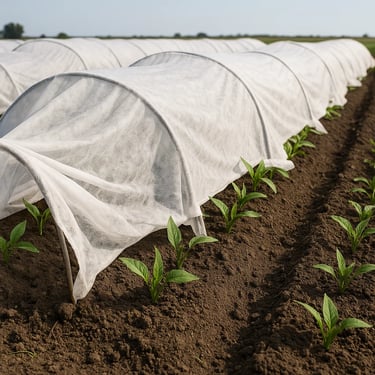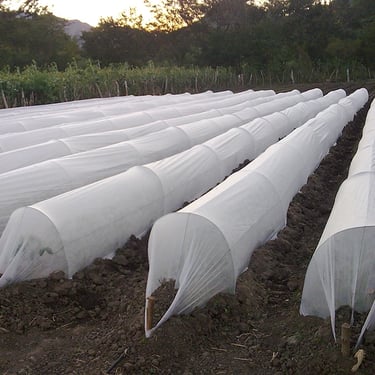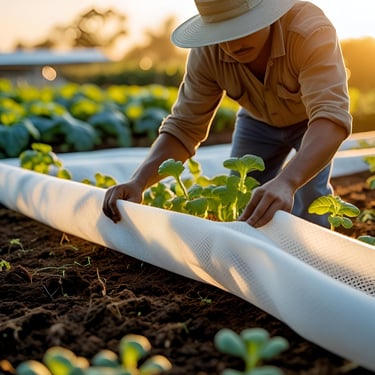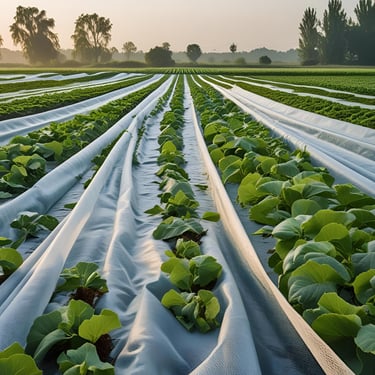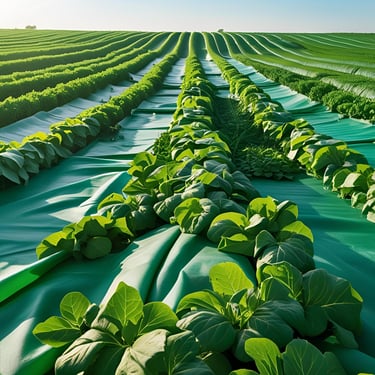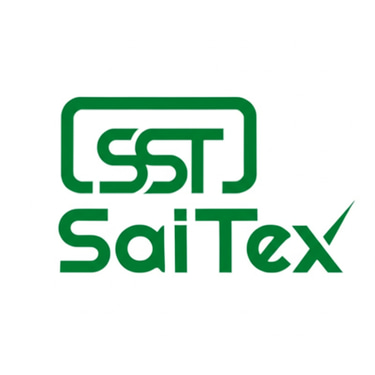Sustainable Farming: Benefits of UV-Stabilized Agriculture Non Woven Fabric
Discover how Saitex UV-stabilized agricultural non woven fabric protects crops, suppresses weeds and retains soil moisture for higher yields and eco-friendly farming.
6/25/20251 min read
Non-woven fabrics have become indispensable in modern agriculture, offering lightweight, cost-effective solutions for crop protection, weed control and moisture management. At Saitex, our UV-stabilized agriculture non-woven fabric blends durability with breathability to help farmers boost yields and reduce labor costs.
1. What Is Agricultural Non-Woven Fabric?
Material: Made primarily from 100 % polypropylene (PP) spunbond fibers.
Construction: Fibers are thermally bonded into a porous sheet—no weaving or knitting required—delivering consistent strength and uniform coverage saitex.online.
Variants:
Standard Spunbond (17–90 GSM)
UV-Treated Non-Woven for enhanced sunlight resistance
Biodegradable Blends (mixed with PLA or other polymers)
2. Key Benefits for Farmers
Crop Protection
Shields seedlings from pests, birds and extreme weather.
Weed Suppression
Blocks sunlight to prevent weed germination, reducing herbicide use.
Soil Moisture Retention
Porous structure allows water penetration while reducing evaporation.
Temperature Regulation
Reflects excess heat in summer and retains warmth during cooler periods.
Ease of Use
Lightweight rolls lay flat, cut to size, install quickly and reuse across seasons.
3. Top Applications
Row Covers & Tunnel Cloches
Mulching & Weed Matting
Frost & Hail Protection
Greenhouse & Nursery Liners
Soil Solarization Sheets
Each application leverages specific GSM and UV-treatment levels—choose 5–50 GSM for transient covers, 60–150 GSM for heavy-duty frost protection.
4. How It’s Made
Spinning: Melted PP polymer extruded into fine filaments.
Web Formation: Filaments laid randomly on a moving belt.
Thermal Bonding: Heated rollers bond fibers without additives.
Finishing: UV inhibitors or biodegradable coatings added as needed.
This spunbond process ensures uniform fiber distribution and high tensile strength, perfect for agricultural demands.
5. Choosing the Right Fabric
GSM (Grams per Square Meter): Higher GSM = more durability but less breathability.
UV Stabilization: Essential for multi-season use under direct sunlight.
Width & Roll Length: Match row spacing or bed dimensions to minimize seams.
Additives: Biodegradable options for eco-friendly operations; insect-repellent treatments for pest-prone areas.
6. Sustainability & Disposal
Recyclable PP: Most Saitex agriculture fabrics can be collected and recycled post-use.
Biodegradable Alternatives: Available for growers seeking zero-waste solutions.
Reduced Chemical Use: By controlling weeds and pests naturally, you cut down on herbicides and insecticides.
Conclusion & Next Steps
Non-woven agricultural fabrics from Saitex deliver a smart, sustainable upgrade over traditional films and textiles—boosting crop health, reducing labor and aligning with eco-goals.
Ready to enhance your fields?
Explore our Agriculture Fabric range or contact us for custom GSM, UV-treatment and biodegradable options.
